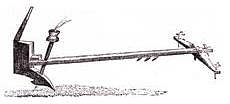Class 5 Exam > Class 5 Tests > Test : Plant Life - 4 - Class 5 MCQ
Test : Plant Life - 4 - Class 5 MCQ
Test Description
20 Questions MCQ Test - Test : Plant Life - 4
Test : Plant Life - 4 for Class 5 2024 is part of Class 5 preparation. The Test : Plant Life - 4 questions and answers have been prepared
according to the Class 5 exam syllabus.The Test : Plant Life - 4 MCQs are made for Class 5 2024 Exam.
Find important definitions, questions, notes, meanings, examples, exercises, MCQs and online tests for Test : Plant Life - 4 below.
Solutions of Test : Plant Life - 4 questions in English are available as part of our course for Class 5 & Test : Plant Life - 4 solutions in
Hindi for Class 5 course.
Download more important topics, notes, lectures and mock test series for Class 5 Exam by signing up for free. Attempt Test : Plant Life - 4 | 20 questions in 20 minutes | Mock test for Class 5 preparation | Free important questions MCQ to study for Class 5 Exam | Download free PDF with solutions
Detailed Solution for Test : Plant Life - 4 - Question 1
Test : Plant Life - 4 - Question 2
Where does the food come from when the seed has not grown its leaves?
Detailed Solution for Test : Plant Life - 4 - Question 2
| 1 Crore+ students have signed up on EduRev. Have you? Download the App |
Detailed Solution for Test : Plant Life - 4 - Question 3
Detailed Solution for Test : Plant Life - 4 - Question 4
Test : Plant Life - 4 - Question 5
Name the crops which are grown from June to October month in India.
Detailed Solution for Test : Plant Life - 4 - Question 5
Detailed Solution for Test : Plant Life - 4 - Question 6
Test : Plant Life - 4 - Question 7
Which one among the following is not followed in agriculture?
Detailed Solution for Test : Plant Life - 4 - Question 7
Detailed Solution for Test : Plant Life - 4 - Question 9
Test : Plant Life - 4 - Question 10
Complete the series. Bryophyllum : ____ :: Ginger : Underground stem
Detailed Solution for Test : Plant Life - 4 - Question 10
Test : Plant Life - 4 - Question 11
The outer covering that protects the baby plant inside the seed is called:
Detailed Solution for Test : Plant Life - 4 - Question 11
Test : Plant Life - 4 - Question 12
Which one among the following seeds are dispersed by explosion?
Detailed Solution for Test : Plant Life - 4 - Question 12
Detailed Solution for Test : Plant Life - 4 - Question 13
Detailed Solution for Test : Plant Life - 4 - Question 14
Detailed Solution for Test : Plant Life - 4 - Question 15
Test : Plant Life - 4 - Question 16
Which among the following has wings on seeds which help it to get carried away by the wind?
Detailed Solution for Test : Plant Life - 4 - Question 16
Detailed Solution for Test : Plant Life - 4 - Question 17
Detailed Solution for Test : Plant Life - 4 - Question 18
Detailed Solution for Test : Plant Life - 4 - Question 19
Detailed Solution for Test : Plant Life - 4 - Question 20
Information about Test : Plant Life - 4 Page
In this test you can find the Exam questions for Test : Plant Life - 4 solved & explained in the simplest way possible.
Besides giving Questions and answers for Test : Plant Life - 4, EduRev gives you an ample number of Online tests for practice
Download as PDF



















